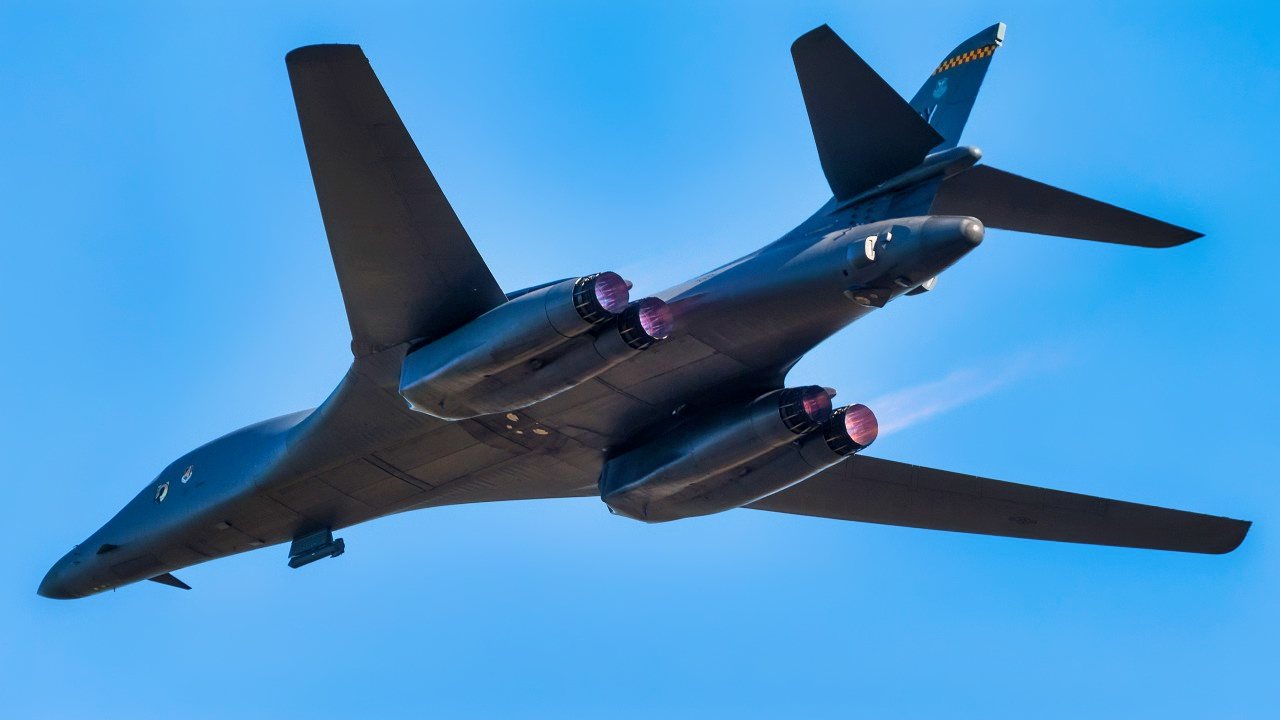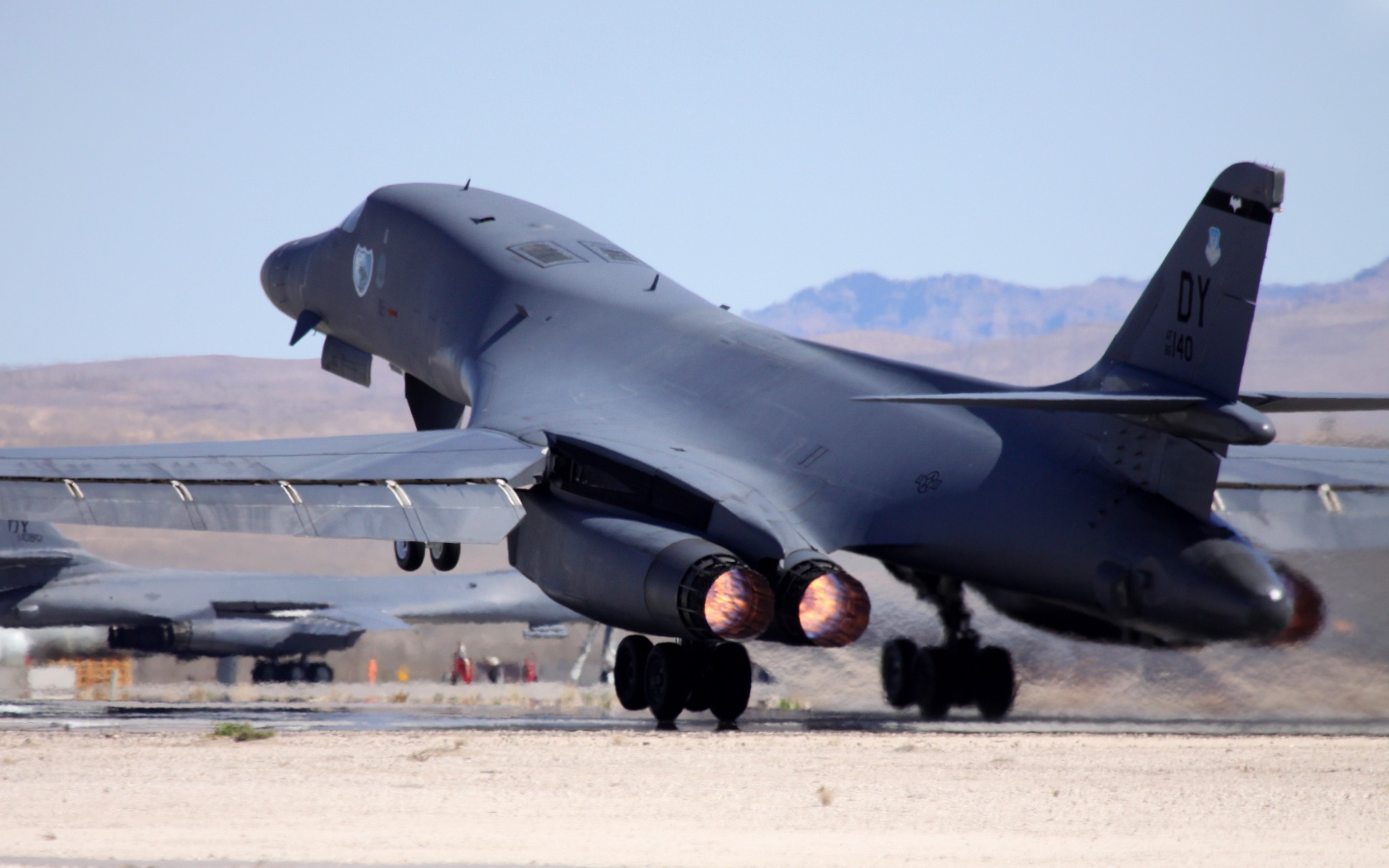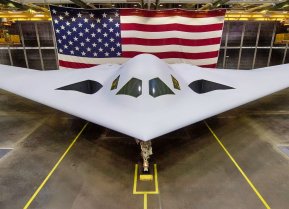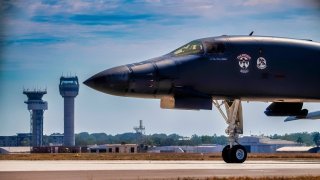The B-1 Bomber Death Spiral Has Now Begun
After becoming the service's workhorse during the Global War on Terror (GWOT), time has taken a toll on the airframes and the B-1 will be retired as the B-21 Raider enters service later this decade
The B-1 Lancer is on the Move - The United States Air Force's Rockwell B-1 Lancer bombers stationed at Ellsworth Air Force Base (AFB), South Dakota, have been grounded since one of the long-range aircraft crashed earlier this month during the completion of a training flight. Four crew members were on board but were able to eject safely, the 28th Bomb Wing at Ellsworth said in a statement.
As a result of the incident, the B-1 fleet at Ellsworth has been grounded while the investigation continues. Ellsworth Air Force Base, which features a single runway, had also halted flight operations since Jan. 5, the day after the crash. Originally slated to resume on January 19, investigators pushed back the normal flight operations as they are still working at the scene. It was announced this week that many of the bombers from the base are being relocated to Dyess AFB, Texas, home of the 7th Bomb Wing.
The Air Force has not confirmed the number of bombers being relocated, but according to a report from the Air Force Times, about 250 aircrew, maintainers and logistics support personnel accompanying the jets are expected to work at Dyess for "several" weeks. That move will allow airmen to continue to train and maintain readiness.
"It's not out of the ordinary to have jets from different squadrons included in training packages, whether we are operating at home or deployed," Col. Seth Spanier, commander of the 7th Bomb Wing, said in a statement. "But anytime we have the opportunity to share knowledge and experiences across squadrons is extremely valuable and contributes to the overall readiness and lethality of the conventional bomber force."
B-1 Lancer: Ready For Action
The limited flight operations at Ellsworth won't impact the 28th Bomb Wing's ability to respond and complete its mission. On Thursday, Col. Derek Oakley, 28th BW commander reaffirmed that the world's largest B-1B combat wing is capable of executing its mission and remain ready.
"It also reassures our allies and partners that we are steadfast in supporting them when needed, and reminds our nation?s adversaries of the capabilities we are able to bring to any fight, anywhere around the globe," Oakley said in a statement.
The flights to Dyess were the first missions since the base's airfield was closed Jan. 4, 2024, and the airfield was closed again until further notice, as the accident investigation team continues its work."While our airfield operations are currently on hold as part of the investigation, today, we proved that this weapon system is mission capable," Oakley added.
The B-1 in the Crosshairs
The B-1 supersonic bomber first entered service in the mid-1980s. It continues to be used to support the U.S. bomber presence in the Asia-Pacific region and to conduct close air support missions in U.S. operations around the world. Since the end of the Cold War, it does not carry nuclear weapons.

It was first employed in combat in Iraq in 1998.
After becoming the service's workhorse during the Global War on Terror (GWOT), time has taken a toll on the airframes and the B-1 will be retired as the B-21 Raider enters service later this decade. It was just a year ago that Air Force Global Strike Command retired the last of 17 B-1B bombers from its inventory, leaving a fleet of 45 aircraft that will serve until the new B-21 Raider stealth bomber is ready for duty, the command announced.

The B-1s have been described as being in "rough shape" after the heavy operational deployments in the Middle East between 2001 and 2014. Lawmakers in Washington have thus ordered the Air Force to maintain the current fleet, while the 2022 National Defense Authorization Act (NDAA) also prevented the service from cutting personnel from units that operate or maintain the Cold War-era warbirds.

The B-1 is expected to be retired in the next decade.
Author Experience and Expertise: Peter Suciu
Peter Suciu is a Michigan-based writer. He has contributed to more than four dozen magazines, newspapers, and websites with over 3,200 published pieces over a twenty-year career in journalism. He regularly writes about military hardware, firearms history, cybersecurity, politics, and international affairs. Peter is also a Contributing Writer for Forbes and Clearance Jobs. You can follow him on Twitter: @PeterSuciu. You can email the author: [email protected].


